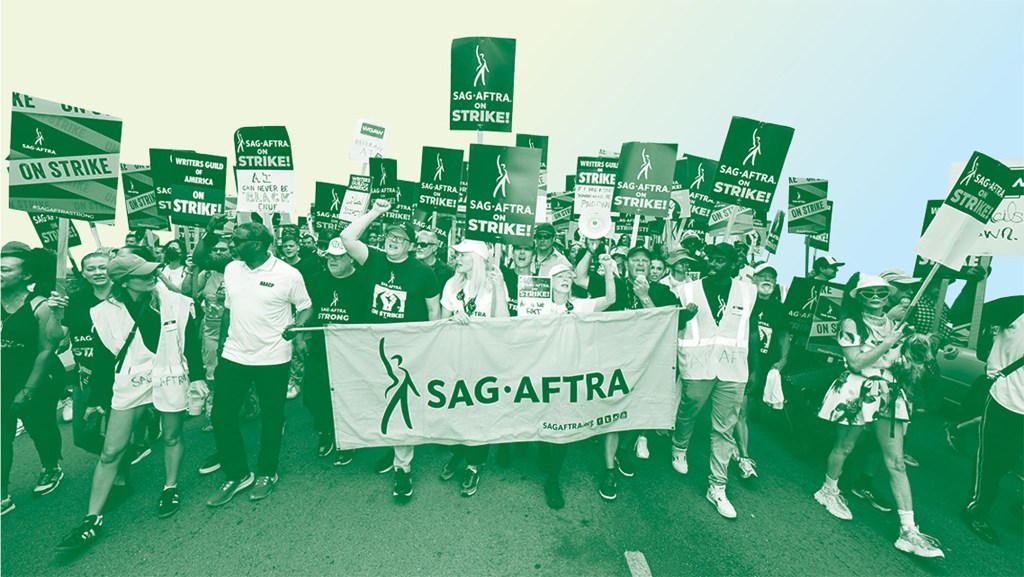When a major disruption hits the entertainment industry, Hollywood business managers often see themselves as canaries in the coal mine — moving at, or even before, the first sign of a threat to guard and grow their clients’ assets. Sounding the alarm without provoking panic has been no easy task in recent years as dual union strikes ground film and television production to a halt on the heels of the global COVID-19 pandemic.
The goal, of course, is to prepare the A-list stars and top creatives on their rosters to weather financial storms before they hit — though that’s often easier said than done.
“It’s one thing to say you want to save money,” says Robert Salzman of David Weise & Associates. “But it takes commitment and hard work. David Weise likes to use the analogy of our services to that of a personal trainer. It’s easier to work out when someone is there at your side motivating you to do that next rep. In our case, it means clients being open to meeting regularly to monitor finances and look at practical metrics.”
While it may seem safe to assume the COVID-19 pandemic shutdown in 2020 would have prompted people working in Hollywood to prioritize creating plans for any unforeseen events in the future, business managers say that hasn’t been the case for everyone.
Belva Anakwenze, a principal at Abacus Financial Business Management, says that government aid in the form of cash payments and forgivable PPP business loans offered a lifeline during the COVID-19 pandemic. Although there have been strike funds — and some stars and showrunners have kept their staff on the payroll amid the shutdown — there has been no equivalent to that federal aid during the labor actions.
“The strikes have taught our clients significantly more than the COVID-19 pandemic,” Anakwenze notes. “Even though we emphasize the importance of cash reserves, the aid during COVID-19 provided false comfort. The strikes have proved that there will not always be a safety net given, and it is crucial to create and have your own net readily available.” Again, she emphasizes that planning for a rainy day is about more than shoring up cash reserves: “It is essential to have assets available for sale and lines of credit open. We have been encouraging clients to leverage their assets to access cash for operations.”
For some, the dual strikes bringing the entertainment business to a standstill barely three years after the pandemic-era shutdowns came at a time when business managers and their clients were still on guard amid an evolving industry recovery.
“With COVID so recent in the rearview mirror, clients have become more adjusted to dealing with events impacting traditional income streams like the strikes, which has management teams proactively diversifying for sustained success and comfort despite the slowdowns,” notes Justin Sroka of Mann Gelon Glodney Gumerove Yee.
Even for those who were well prepared, the now-concluded WGA strike and the ongoing SAG-AFTRA labor action — which recently passed the 100-day mark — have made it difficult to stay afloat financially.
Freemark Financial co-founder Steves Rodriguez notes that step one was doing an active review of spending. “Eliminating discretionary spending as much as possible is typically first on the list,” he says. “One would also look at the largest expenditure buckets, which for many people is their home. So looking at creative solutions around housing is one of the more impactful changes one can make.”
Adds Howard Altman of Grant Tani Barash & Altman: “Identify essentials. Identify matters that need to be addressed immediately versus those that can wait. Create a specific plan and path forward. Everyone feels better and prepared when there is a specific plan — in all areas of life.”
For many, the path forward has required doing far more than cutting back on spending.
“Unfortunately, some clients have had to go into their pension accounts and either borrow or liquidate some of their assets,” says Carrie Malcolm of CRM Management. “And, in cases where mortgage rates have changed or people have needed to relocate, the banks have been feeling nervous about lending to out-of-work actors and writers.”
The situation has led to difficult actions and conversations — especially when hot real estate markets in pre-shutdown years resulted in some individuals upgrading to more expensive homes. Says Larry Witzer of Gettleson Witzer & O’Connor, “Telling a client they have to sell their home or lay off staff is never a comfortable conversation.”
This time around, it seems the collective industry trauma has forced showbiz creatives and talent to focus on what they really want out of life and set their financial priorities accordingly. “No matter how creative a person is, we can’t avoid the reality that bad things happen to good people,” says Steven Campeas of SJC. “There will always be an unexpected expense or circumstance that will require funds we had no intention of spending. I am not a cynic, but the ‘rainy day’ will always come, and sometimes it lasts for months. This strike brought that point home.”
The financial squeeze brought on by the dual strikes also has reignited debates and uncertainty over the future of content spending by major studios and streamers after the end of Peak TV, the ever-shifting economics of online video platforms, and the workplace implications of generative artificial intelligence.
Despite the challenging industry backdrop, Marie Ambrosino of Gursey | Schneider urges clients to keep their heads up: “Stay the course on what matters most in your life, keep your faith, make well-thought-out decisions.”
Generally, the business managers say this year has made clients more invested in their financial situation, more introspective and more willing to make changes moving forward.
“I hear, ‘After the strike I need to examine how much I spend,’ ” says Randy O’Connor of Gettleson Witzer & O’Connor. “Our clients now realize they have built up a big fixed spending base that needs to be challenged and reduced.”
Of course, there’s no telling when “after the strike” will be. The 2023 WGA strike ran for 148 days before the lengthy work stoppage ended with a new deal for screenwriters, and SAG-AFTRA is back at the bargaining table after so far failing to reach an agreement with the AMPTP — but, even when it does, the livelihoods of Hollywood workers could quite possibly be upended again next year as the industry looks ahead to the 2024 labor contract battles. The Hollywood Teamsters, IATSE and unions that are part of Hollywood Basic Crafts and include IBEW Local 40, LIUNA! Local 724, OPCMIA Local 755 and UA Local 78 also head to the bargaining table.
All of which emphasizes the need to continue being proactive for Altman: “This has underscored the importance of recognizing the volatility of the industry, the fact that nothing is guaranteed, and the reason for meaningful savings and reserves.”
This story first appeared in the Oct. 25 issue of The Hollywood Reporter magazine. Click here to subscribe.




